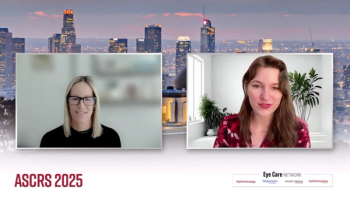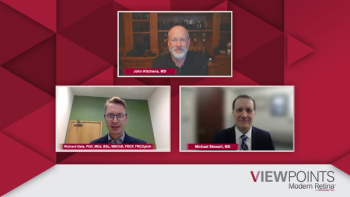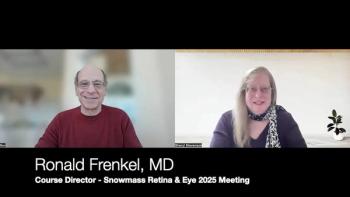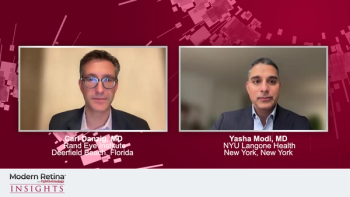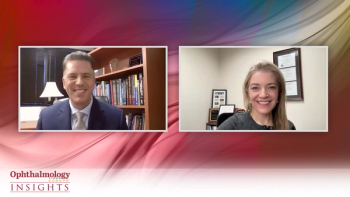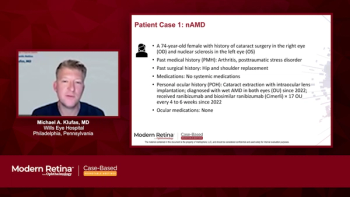
A panelist discusses how a man aged 79 years with long-duration diabetes and treatment-naive diabetic macular edema (DME) responded well to aflibercept 8-mg therapy, progressing from 4-week loading doses to an extended 10-week interval with resolution of macular edema and improved vision from 20/60 to 20/30.

